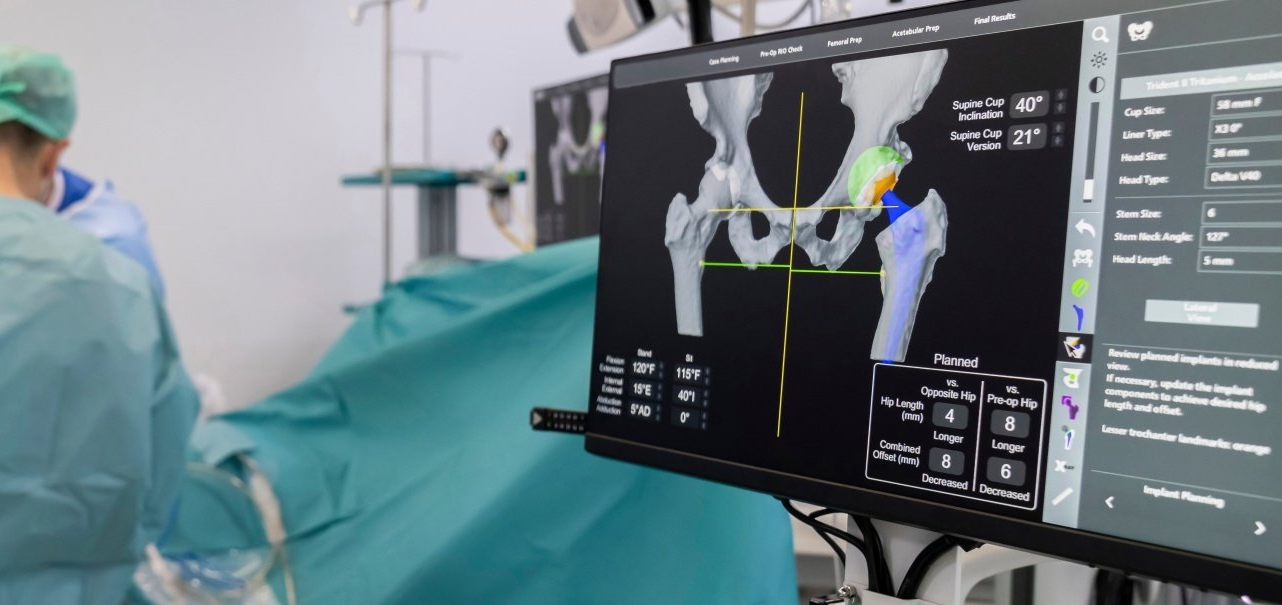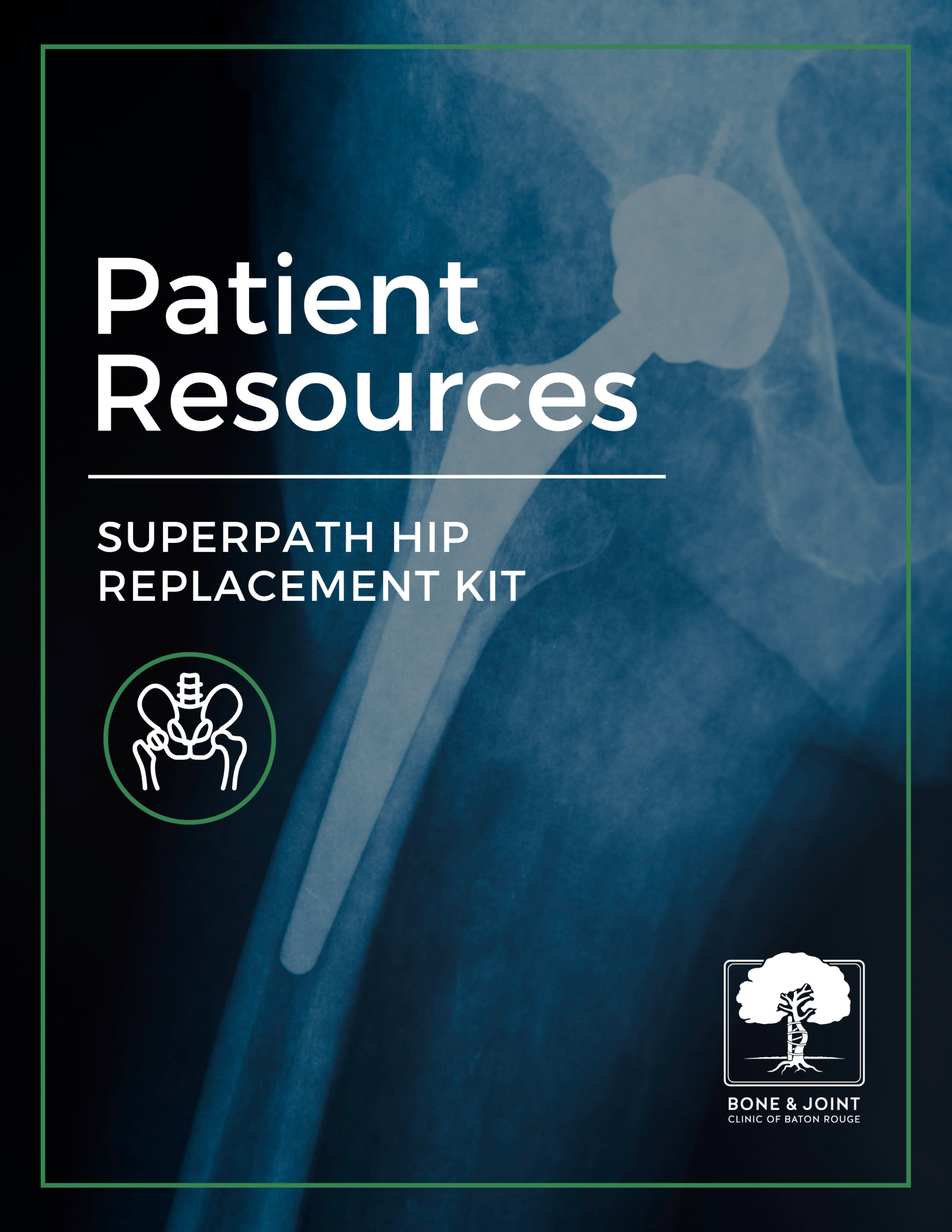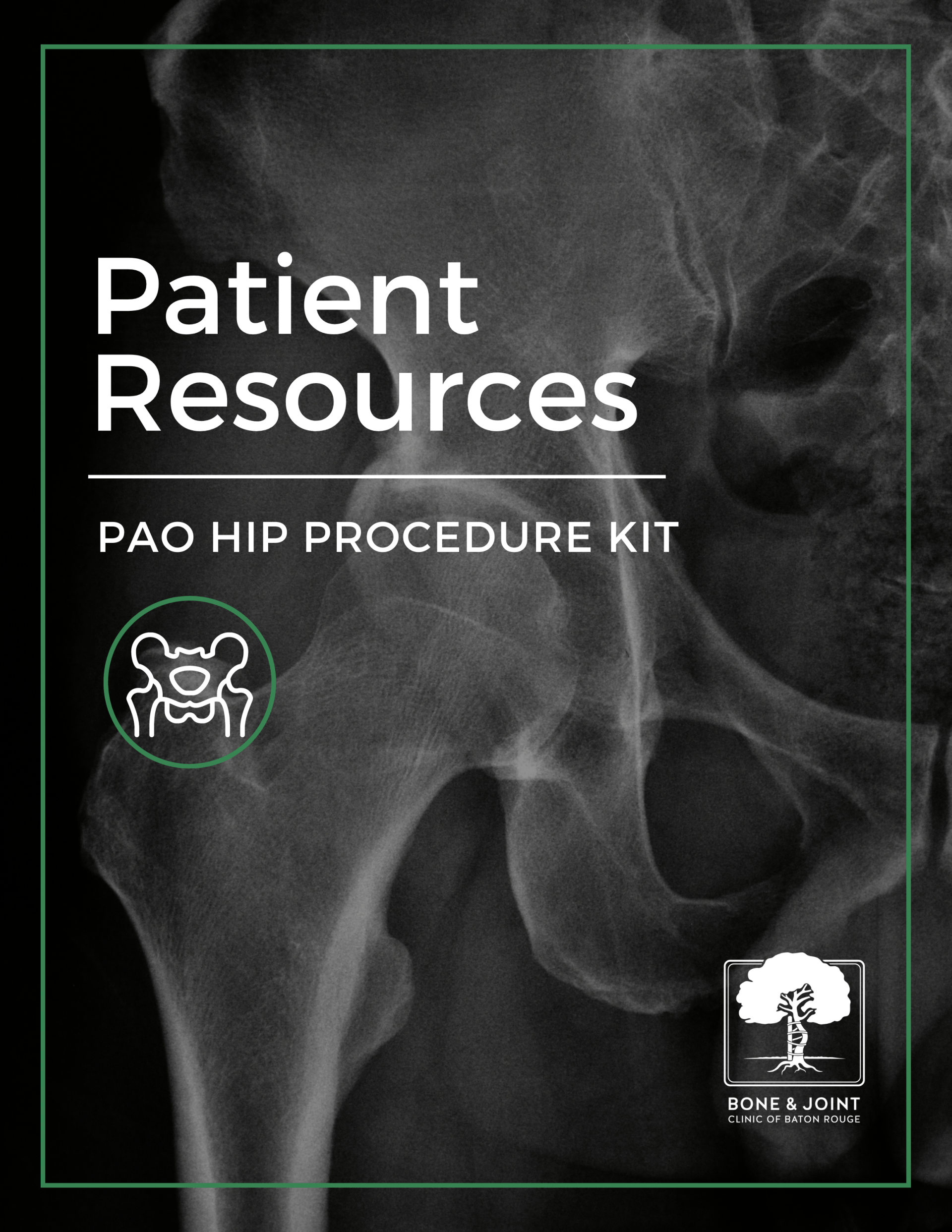Hip Pain Baton Rouge
What Are Common Conditions That Cause Hip Pain?
Common conditions include hip strain due to overuse or sudden injury, impingement due to abnormalities of the shape of the femoral head (ball) or acetabulum (hip socket), bursitis (a swelling or inflammation of the hip joint bursa), and osteoarthritis which is wearing out of the cartilage in the joint.
When Do I See A Doctor For Hip Pain?
Medical assistance should be sought out if symptoms persist after at home treatment has been attempted. Minor hip pain or injuries can often be recovered from on their own with proper rest, use of ice packs, applying heat, and use of pain relievers such as acetaminophen or ibuprofen. If pain or other symptoms such as stiffness persist visiting an orthopedic doctor is advised. It is important to note that many conditions felt to be a “groin pull” usually indicate a more complex problem such as hip impingement or hip dysplasia and may represent the beginning of damage to the hip joint. A simple xray from a hip specialist can easily rule this condition in or out.
What Takes Place During My Initial Hip Exam?
A doctor will examine a patient for hip pain by testing everyday activities such as walking, bending, flexing the joint, and testing any impediments to the normal range of motion. Patients will also be asked about injury history, recent activities, obstacles to regular daily activity, and when the pain started. Imaging such as xray, MRI or ultrasonography may be performed to check for internal damage or injury to the hip.
What Are The Treatment Options For Hip Injuries?
Hip injuries have a variety of treatment options. At home treatments include over the counter medication, rest, exercise programs, and corrective tools such as canes or joint braces. Medical treatments can include injections such as a corticosteroid, orthopedic physical therapy, and in more severe cases surgery.
How Will I Know If Hip Surgery Is Required?
Surgery may be advisable in situations where an injury doesn’t heal on its own after an extended period and symptoms continue to persist despite medication and physical therapy.
What Are The Surgical Options For Hip Injuries?

Most hip surgeries are focused on the joint, and the best surgery option depends on the condition and age of the patient. Surgical options include arthroscopy, a minimally invasive surgery where torn cartilage is repaired and minor bone abnormalities are corrected; osteotomy where the joint itself is reshaped, and total hip replacement where the entire hip joint is replaced with a prosthesis.
What Is A Hip Replacement?
A hip replacement is a surgical procedure where the hip joint is either completely or partially replaced with a prosthesis. A modern hip prosthesis is typically made of materials such as titanium, polyethylene, ceramic, and/or cobalt-chromium.
Am I A Candidate For Hip Replacement?
There are no exact rules that define a person as needing a hip replacement. What makes a person a
good candidate for hip replacement is pervasive, ongoing symptoms that negatively impact their quality of life. Symptoms such as continuous pain, stiffness, the inability to walk short distances, limping, and difficulty tying shoes on the involved side are all signs a hip replacement may be needed.
What Are The Newer Advancements In Hip Replacements?
SuperPath, or Supercapsular Percutaneously Assisted Total Hip, is
a special technique to perform total hip replacements that causes minimal disruption to the hip capsule and surrounding soft tissues.It was first introduced in 2010 and has been quickly proven as a safe and highly beneficial alternative to traditional hip replacements. The main distinguishing factors of SuperPath are a smaller incision, greater preservation of deep tissues with minimal dissection, and the ability to perform the procedure without the need to dislocate the hip joint. This is in contrast to standard techniques where the leg must be twisted to dislocate the hip and perform the procedure. Because of minimal disruption of the hip capsule, the SuperPath technique provides excellent resistance to hip dislocation.

Download the SuperPath Patient Kit today
All SuperPath Hip Replacement resources in one place.
Discover the benefits of the SuperPath Hip Procedure
Over 300,000 hip replacements are performed across the U.S. each year. It is one of the most common orthopedic procedures and delivers some of the best results.
However, new techniques continue to improve the procedure. One such technique is SuperPath, a minimally invasive approach offering a large number of patient benefits, including shorter hospital stays and speedier recovery times.
Discover the details of the
SuperPath Hip procedure by downloading the patient kit today.
Other Alternatives To Hip Replacement Include:
PAO is a surgical technique which allows the physician to improve instances of hip dysplasia without replacing the joint. Through a series of cuts around the hip socket, it can be moved into a better position, where it covers and protects a greater portion of the femoral head. Once this has been accomplished, the new positioning is fixed with 3 to 4 screws.
Dr Arthur Hess is one of the very few surgeons in the state with experience in performing PAO surgery for hip dysplasia.
Arthroscopic Surgery
This is a minimally invasive technique whereby a surgeon can repair torn labrum cartilage and reshape deformed bones due to a congenital condition called femoroacetabular impingement (FAI). It is now generally accepted that FAI is a condition that may cause hip arthritis to begin in a relatively young patient. The procedure is very effective at relieving pain, and although not yet proven in long term studies, the hope is that by fixing the abnormalities early, we may be preventing that patient from developing enough hip damage that he or she eventually needs a hip replacement.
A Biologic Injection is a same-day, in-office procedure. Examples of this include
Platelet Rich Plasma (PRP) and
Bone Marrow Aspirate Concentrate (BMAC), sometimes referred to as stem cell injection. Biologic Injections are available for any joint.. These biologic injections have been shown in the literature to reduce pain and inflammation in patients with mild to moderate arthritis.

Download the PAO Patient Kit today
All PAO Hip Procedure resources in one place.
Learn more about the PAO Hip Procedure
Hip dysplasia is among the most common birth abnormalities and is the leading cause of hip arthritis in patients under the age of 50. Fortunately, PAO is a safe and effective treatment option available to many patients.
Discover the details of the PAO hip procedure by downloading the PAO Patient Kit today.
Baton Rouge Hip Surgeons
Hip pain is no fun which is why we want to get you back to moving more and hurting less. As leaders in assessing, diagnosing and treating hip injuries, our team of hip experts will provide a treatment plan centered around you. Take the first step towards living without hip pain by scheduling an appointment today.
JOSEPH E. BROYLES, M.D.
Joint Replacement Surgery
Hip and Knee Arthroscopy
Cartilage Regeneration
ARTHUR E. HESS, M.D.
Pediatric & Adult Orthopedic Trauma
Hip, Knee & Shoulder Reconstruction
Hip Preservation
Total Joint Replacement Surgery
Robot-assisted total knee arthroplasty
General Orthopedics
MATHEW J. MAZOCH, M.D.
General Orthopedics
Sports Medicine
Shoulder Surgery
ALAN C. SCHROEDER, M.D.
Shoulder Arthroscopy
General Orthopedics
Orthopedic Sports Medicine
RELATED READING
Hip Surgery Advancements in Baton Rouge
We treat people of all ages with hip injuries caused by accidents, sports injuries, disabilities, or degenerative diseases. Discover how we are implementing newer and safer treatments for hip patients in Baton Rouge and the surrounding region.








